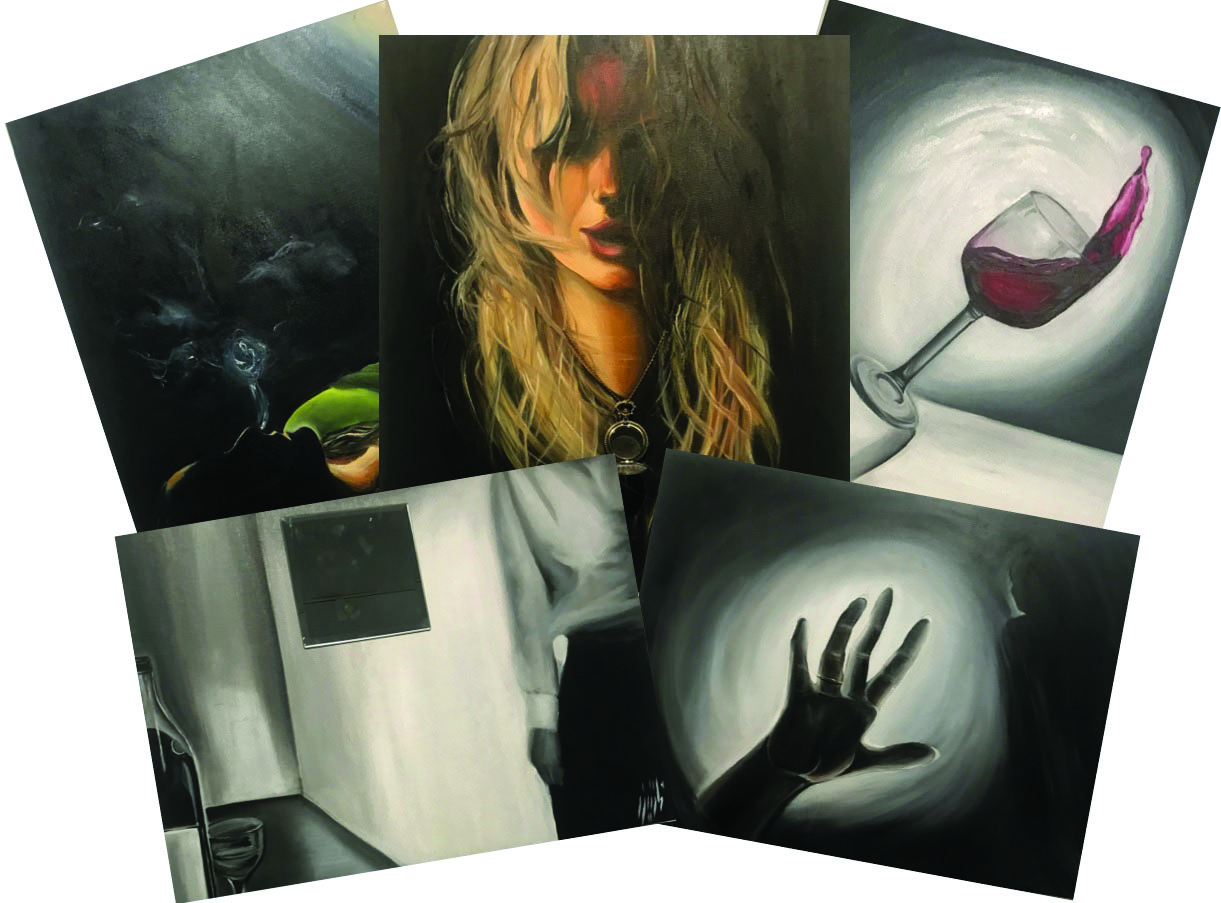Golnaz Taherian | Arts Editor
Featured Image: Babaei uses real objects to make her pieces as authentic as possible. | Golnaz Taherian
Nazanin Babaei’s art exhibition, ‘Moments After’, portrays the life of a woman recovering from the trauma of sexual violence, as well as her struggle to communicate her despair, in fear of judgment.
Babaei, a kinesiology and visual arts student, readily admits that her personal history inspired her exhibition. “I’ve been struggling with this experience for so long and I needed to get it out through my art,” she explains.
Located at the Special Project Gallery of Joan and Martin Goldfarb Centre for Fine Arts, Babaei’s oil-on-canvas collection depicts a plethora of characters, settings, and moods. She seeks to universalize her experience by showing that sexual violence happens everyday to many people. Unfortunately, she explains, only a few are willing to talk about it.
The visual arts program at York has helped Babaei with her art. She notes that there are many great professors in the program that challenge students and offer opportunities to explore different styles and techniques. She also mentions how the critique sessions are a great place to improve and take risks.
“I run a lot these days” is a dark-coloured, gloomy painting, which portrays a woman’s lower legs and black high-heels running through a rain puddle. In the piece, water courses through chaotically, which seems to symbolize the woman’s inner struggle. Notably, however, the figure runs above the water while holding a closed umbrella, which balances out the foggy atmosphere with a sense of feminine power.
Babaei uses real objects to make her pieces as authentic as possible. Through her work, she strives to illustrate the daily, awful reality of sexual violence.
For example, in the collage “Rage,” there’s a portrait of a woman with messy blonde hair and open lips. From where her neck is painted, the artist has hung an actual, physical locket. The woman appears as if from nowhere, trying to be seen. Her open lips suggest conversation. Except for her face, lips, and hair, her whole visage is in shadows, including her eyes.
The figure seems lost and confused. Symbolically, her open locket seems to represent a yearning desire to open up and talk to someone. However, the locket’s emptiness represents her struggle to do so.
The artist notes: “You don’t know what happened before this moment that she looks like this now; that’s why I want the audience to make up their own stories.”
In a black-and-white painting entitled “Look at me,” a woman stands straight in a room across from a bottle of wine and a glass. A small square window is painted between them. Babaei explains: “By using the mirror, I wanted to give the feeling that we are very intensely looking at her and she’s being exposed. Looking at the mirror, we see ourselves, so we can relate.”
The woman’s face is unseen, her identity ambiguous. This turns the viewer’s attention upon the mirror, in which one can see oneself reflected. The mirror is meant to represent that each of us has our own personal experiences in life, and our own struggles.


